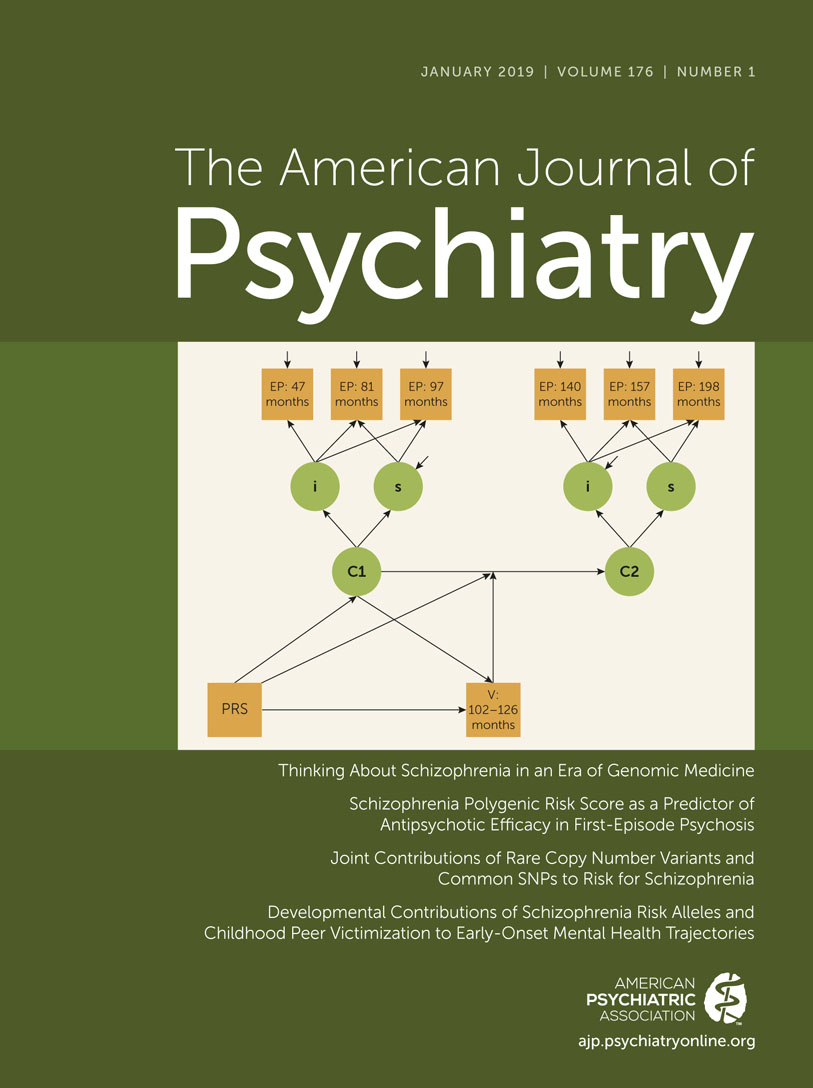Developmental Contributions of Schizophrenia Risk Alleles and Childhood Peer Victimization to Early-Onset Mental Health Trajectories
Abstract
Objective:
Twin studies suggest that genetic factors contribute to continuity in mental health problems and that environmental factors are the major contributor to developmental change. The authors investigated the influence of psychiatric risk alleles on early-onset mental health trajectories and whether the trajectories were subsequently modified by exposure to childhood victimization.
Methods:
The sample was a prospective U.K. population-based cohort, the Avon Longitudinal Study of Parents and Children. The developmental trajectories of emotional problems were estimated in childhood (approximately ages 4–8 years) and adolescence (approximately ages 12–17 years). Psychiatric risk alleles were indexed by polygenic risk scores (PRS) for schizophrenia using genome-wide association study results from the Psychiatric Genomics Consortium. Chronic peer victimization in late childhood (ages 8.5 and 10.5 years) was assessed as an index of environmental exposure. Individuals with sufficient data on emotional problems, the PRS, and victimization were included in the main analyses (N=3,988).
Results:
Higher schizophrenia PRSs were associated with a trajectory of early-onset increasing emotional problems (odds ratio=1.18, 95% CI=1.02–1.36) compared with a trajectory of low-stable emotional problems. Subsequent exposure to victimization increased the likelihood of transitioning from a trajectory of low-stable emotional problems during childhood (before exposure) to an increasing trajectory in adolescence (after exposure) (odds ratio=2.59, 95% CI=1.48–4.53).
Conclusions:
While the early development of emotional problems was associated with genetic risk (schizophrenia risk alleles), the subsequent course of emotional problems for those who might otherwise have remained on a more favorable trajectory was altered by exposure to peer victimization, which is a potentially modifiable environmental exposure.



